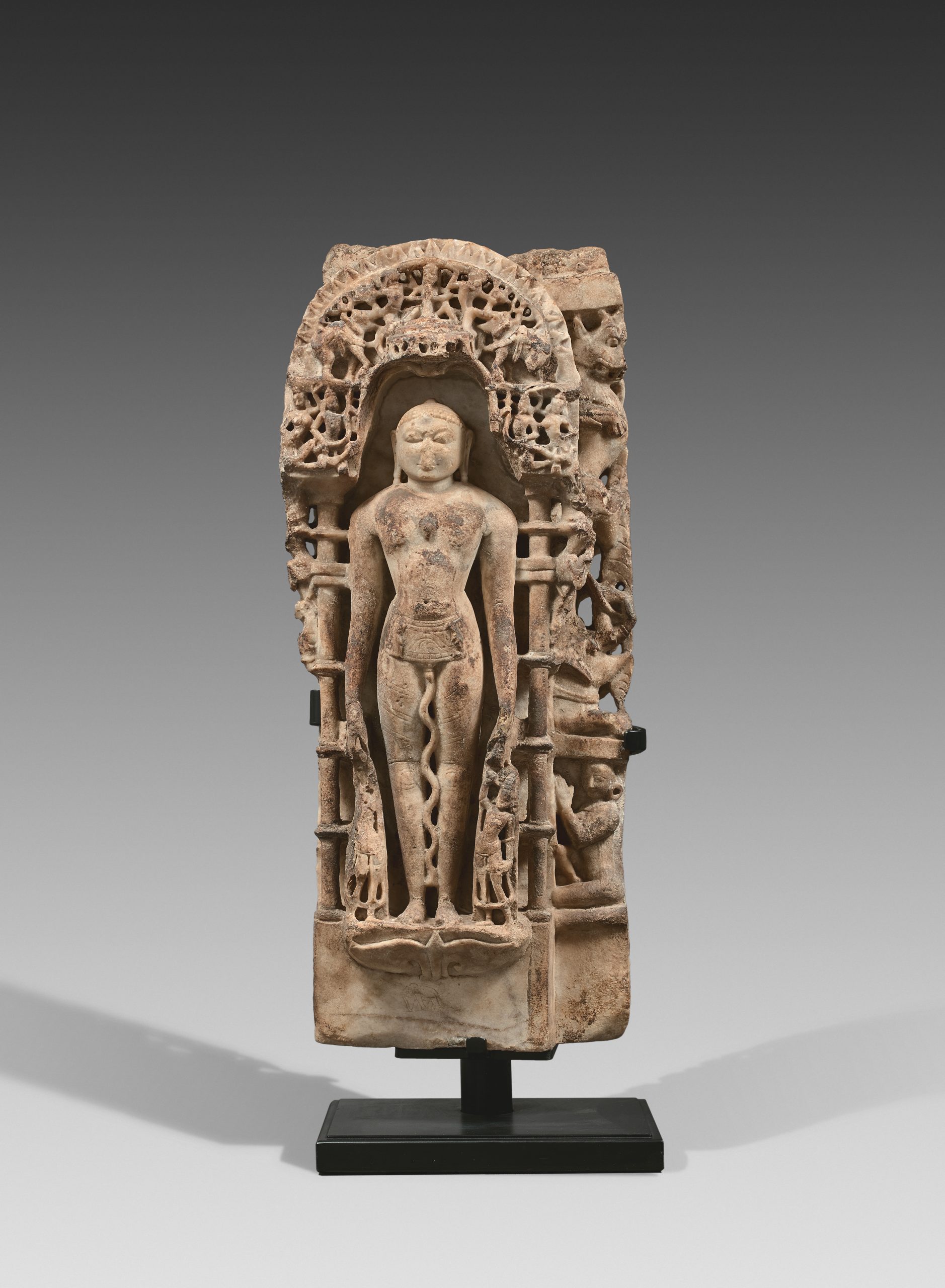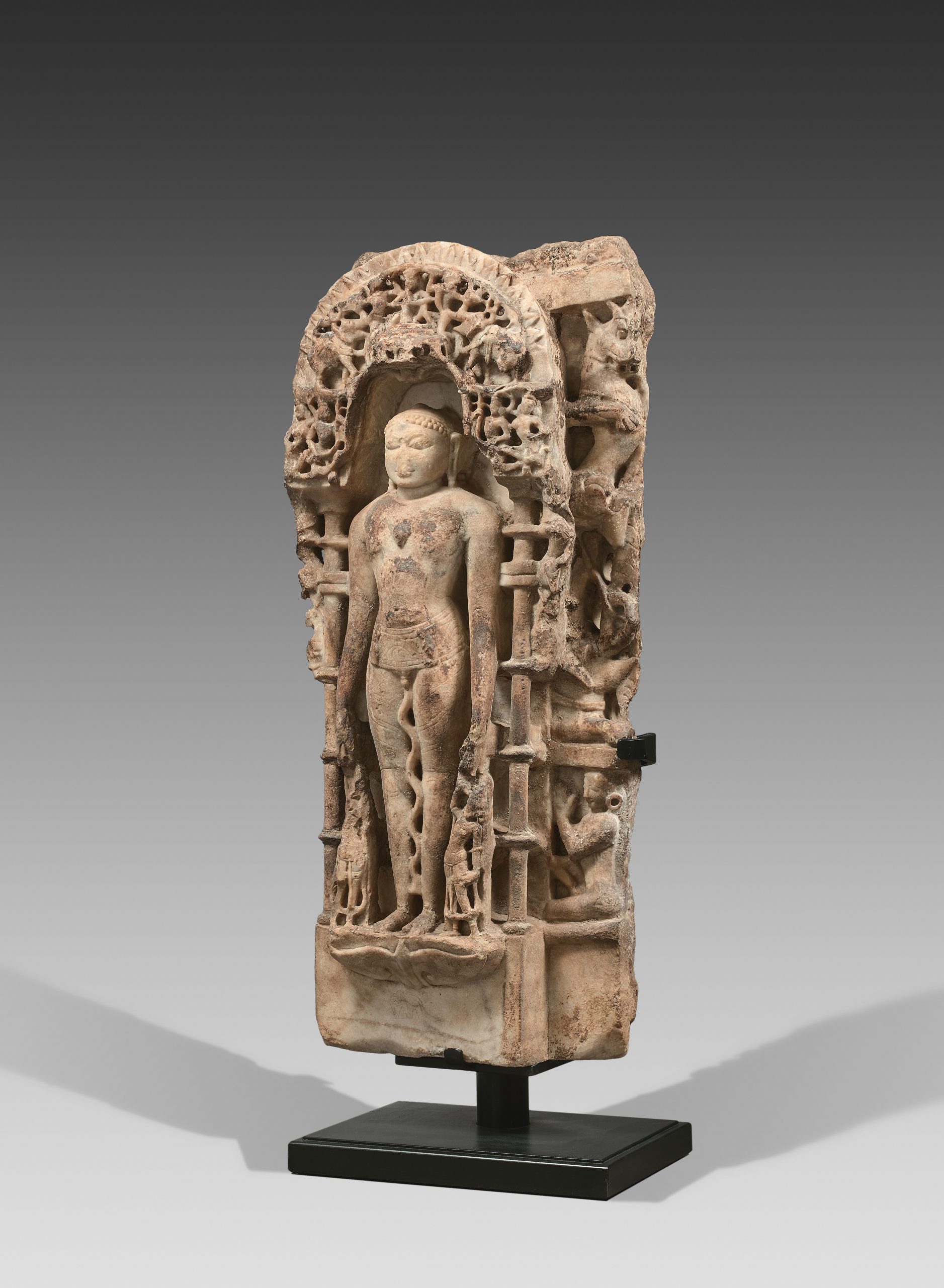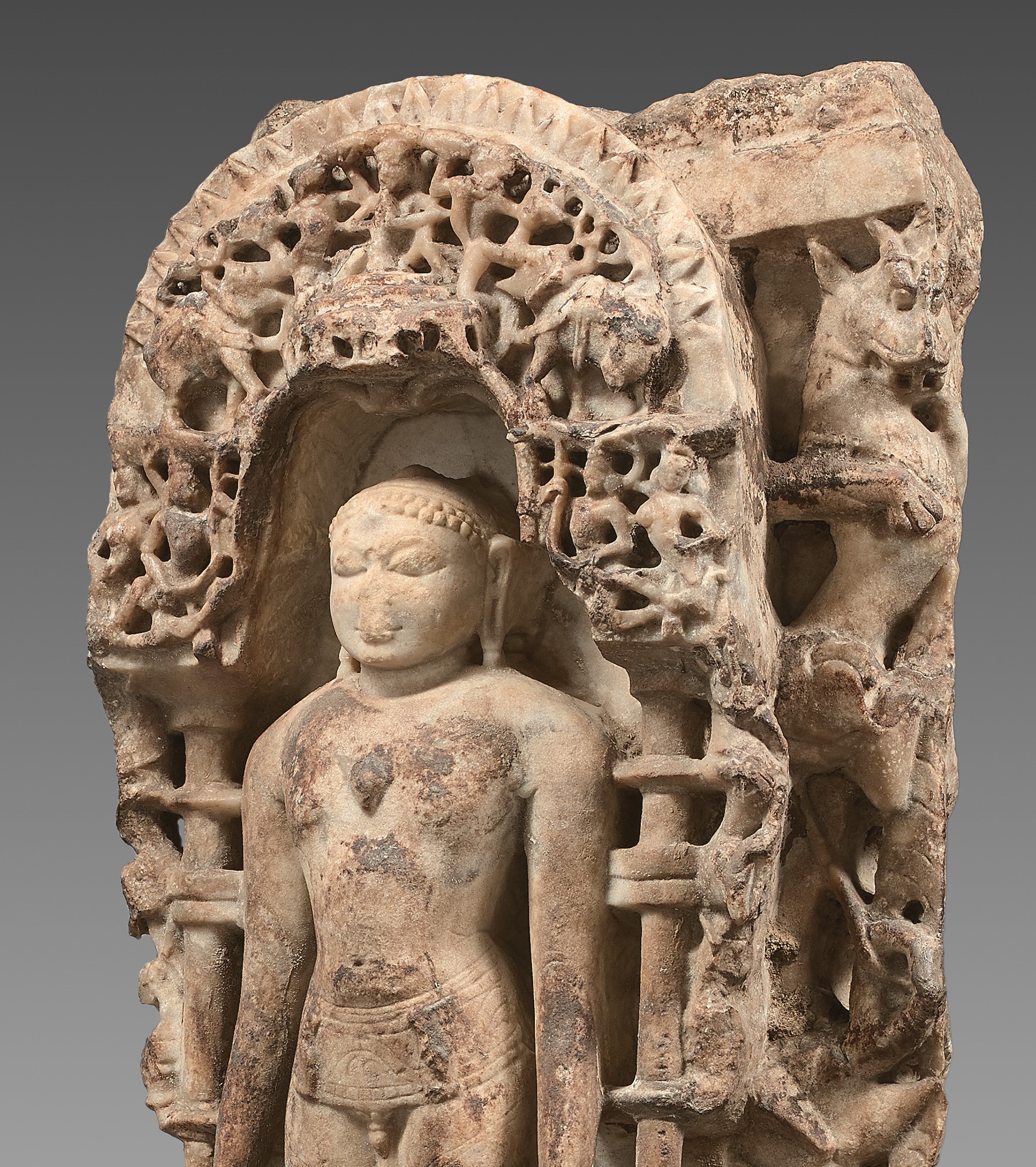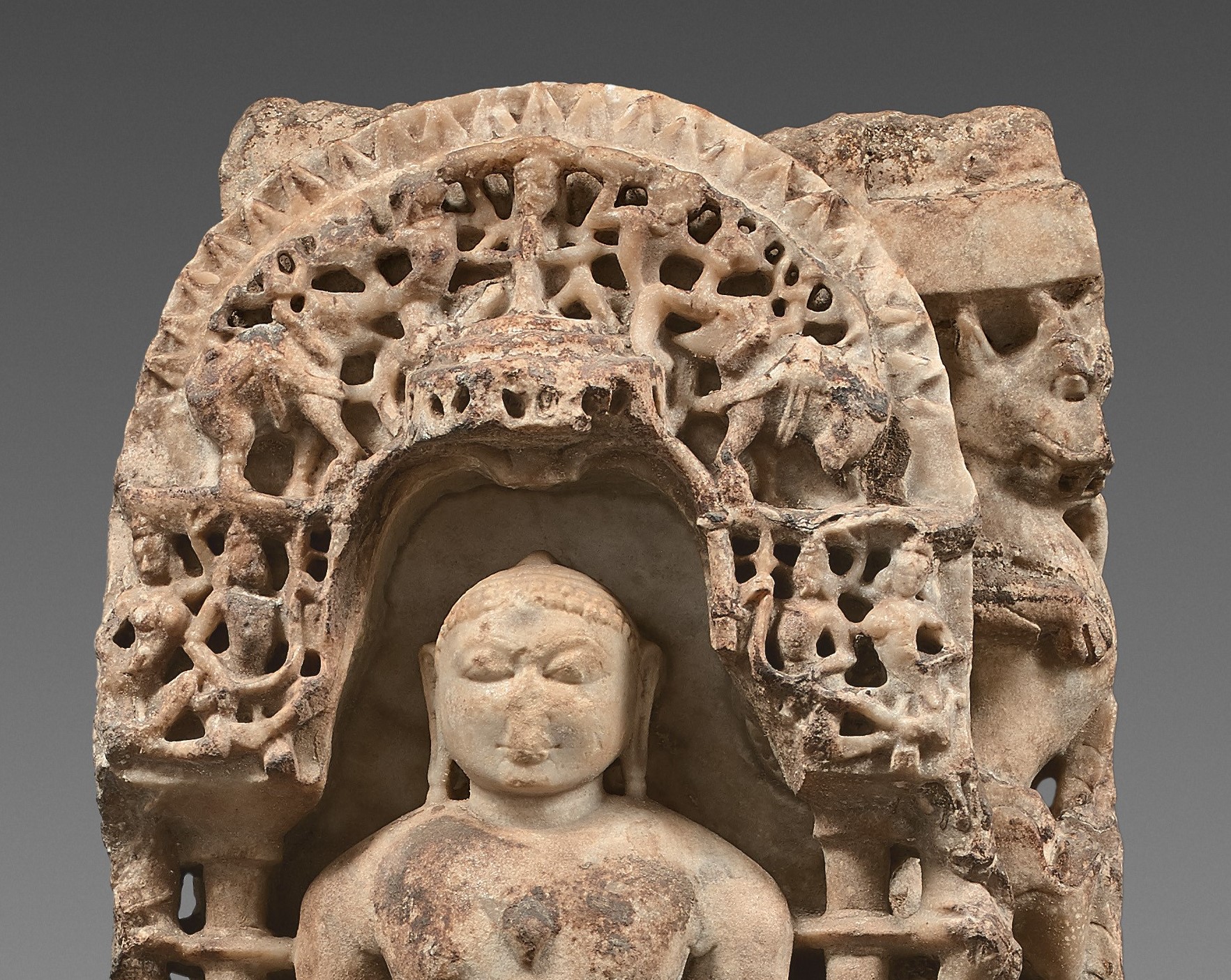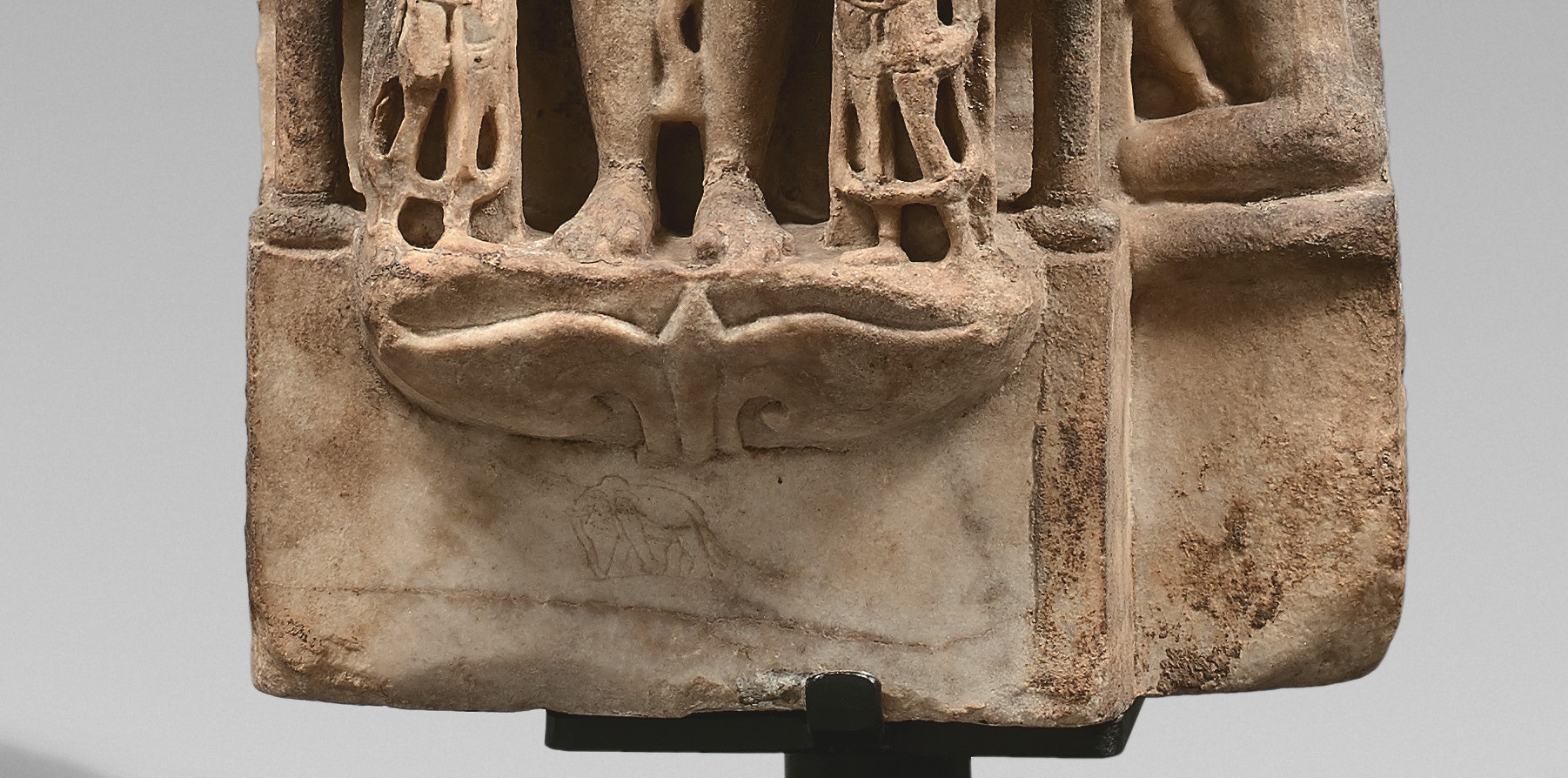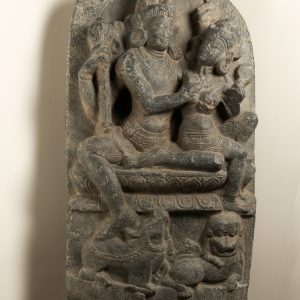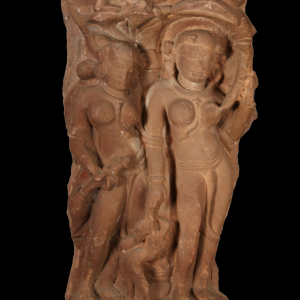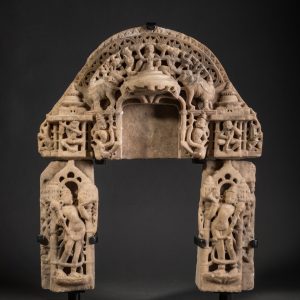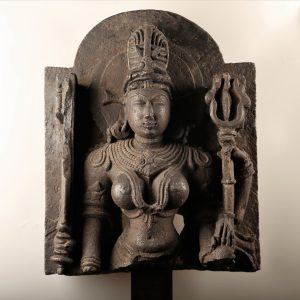Ajitanātha
25 000,00€
Description
Jainism, an Indian religion predating Buddhism
Jain sanctuaries have countless depictions of the Tirthaṅkara, also called Jina, omniscient beings who have broken free from the cycle of reincarnation. These extraordinary characters, of which there are twenty-four, existed down through the ages and are responsible for transmitting the foundations of Jain doctrine through the centuries. This doctrine predates Buddhism and one of its fundamental principles is non-violence (ahiṃsā), which applies to all creatures. This impressive stele represents Ajitanātha, the second of the twenty-four Jina.
Ajitanātha, the invincible master
Ajitanātha means “invincible”, he is the one who “never succumbed to material comforts or temptations, and was never defeated by heretics” (see Norton Simon Museum, notice M.1998.1.S). He stands in a pose that is proper to Jainism, called “kāyotsarga”: standing with his arms stretched out along his body, without touching it. The śrīvatsa, an auspicious symbol, is carved in the middle of his chest. Because he wears clothing, this Jina can be associated with the Jain order called Śvetāmbara. Under his feet, engraved on the base, we recognize his symbol, an elephant.
Divine Assembly
In the upper part, two elephants anoint the goddess Mahālakṣmī, also called Śrī, shown in the centre. They honoured Ajitanātha in the same way. This iconography refers to the abhiṣeka of Śrī, a devotional activity consisting in bringing blessing through the pouring of sacred water. This is a particularly auspicious theme common to Hinduism, Buddhism and Jainism. In the register directly below, the figuration of vidyādhara and gāndharva reinforces the positive character of the scene. Holding a lotus flower here, the vidyādhara are beings with magical powers living in a wonderful world and celebrating the deities by throwing them jewels or garlands. Their consorts make a gesture of approval with their right hand and were probably holding a vīṇā, an Indian musical instrument. They could therefore be two gāndharvī, celestial musicians beings. On either side of the Jina at his feet, two divine attendants accompany him, while a donor sits on his left as a prayer. In the register above, a majestic leogryph evokes the uprights of the divine thrones.
Jainism, a popular religion in Western India
The piece is characteristic of the medieval period in Gujarāt, in Western India, and its decorative refinement is quite remarkable. Emblematic of Indian art, the side columns give a lot of elegance as does the lotus of the base, and the openwork is exceptional. In medieval times, Jain sculptors preferred white marble over all other stone because of its pure color. This is demonstrated by the many vast temples built on hilltops, as a destination for pilgrimage, such as Pārśvanātha in Gujarāt or Ranakpur and Mount Ābū in Rājasthān.
Provenance: Private collection, Luxembourg, formed from the 1980s.

